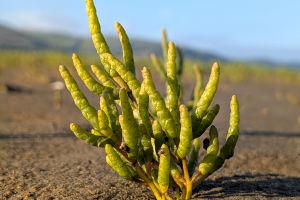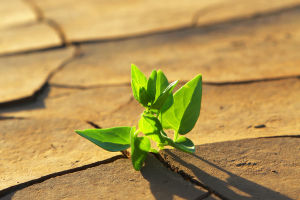Plants may seem passive, rooted in one place, but their survival in extreme environments is astonishing.
From arid deserts to icy tundras and high mountains, plants have developed strategies to withstand heat, cold, drought, high salinity, and nutrient scarcity.
These adaptations not only ensure survival but also provide insights into ecological balance and potential innovations for sustainable agriculture. Understanding how plants thrive in these harsh conditions reveals the incredible resilience and versatility of life.
Desert Survival: Conserving Water
Deserts are among the harshest environments on Earth, with scorching temperatures and limited rainfall. Plants like cacti, agaves, and aloe species have evolved thick, fleshy tissues to store water. Waxy coatings on leaves and stems reduce evaporation, while shallow, widespread root systems quickly absorb even minimal rainfall.
Many desert plants also use CAM photosynthesis, opening their stomata at night rather than during the day, to conserve water while producing energy. Some species, like the resurrection plant (Selaginella lepidophylla), can dry out completely during drought and revive when water becomes available, showcasing an extreme form of adaptation.
Cold Climates: Coping with Frost
In polar regions and alpine zones, freezing temperatures and short growing seasons pose a challenge. Mosses, lichens, and alpine wildflowers produce antifreeze proteins that prevent ice crystals from damaging cells. Many of these plants grow close to the ground, reducing exposure to harsh winds and benefiting from the slightly warmer microclimate created by snow insulation.
Perennial plants store energy in underground bulbs or roots, allowing them to sprout rapidly during brief summer periods. Species like the Arctic flower even orient their flowers to follow the sun, maximizing heat absorption and promoting pollination in frigid conditions.
Saline Environments: Thriving in Salt
High-salinity environments, such as salt flats and coastal regions, are inhospitable for most plants. Halophytes, or salt-tolerant species, have developed mechanisms to manage salt stress. For instance, mangroves filter salt through their roots and excrete excess salt via specialized leaves.
Plants like Salicornia store salt in vacuoles or secrete it externally, preventing toxicity. These adaptations allow halophytes to colonize areas where few competitors can survive, maintaining ecosystems in challenging landscapes.
Nutrient-Poor Soils: Adaptations to Scarcity
Some extreme habitats, such as rocky slopes and volcanic soils, are deficient in nutrients. Plants in these areas form symbiotic relationships with fungi or bacteria to obtain essential minerals. Legumes, for example, host nitrogen-fixing bacteria in root nodules, while species like Protea develop proteoid roots that release acids to mobilize phosphorus.
These strategies enable plants to grow in soils where most species would fail, demonstrating a remarkable ability to overcome environmental limitations.
Rapid Life Cycles: Escaping Harsh Seasons
Certain plants avoid extreme conditions through timing. Annual desert and tundra plants grow, reproduce, and die within a few weeks or months during favorable periods. Their seeds remain dormant for years, resistant to drought or freezing, and germinate only when the environment is suitable. This "escape through timing" strategy ensures survival despite unpredictable and harsh climates.
Morphological Innovations: Structure Matters
Extreme habitats drive unique structural adaptations. Cushion-shaped alpine plants reduce heat loss and resist wind damage. Desert plants like cacti have spines that minimize water loss and protect against herbivores. Leaf hairs on some tundra plants reflect excess sunlight and reduce evaporation. These morphological traits highlight how plants' physical forms are shaped by environmental pressures, balancing survival needs with ecological efficiency.
Conclusion: Lessons from Nature's Survivors
Plants in extreme environments showcase biochemical, structural, and temporal ingenuity. Water-storing tissues, antifreeze proteins, salt excretion, symbiotic nutrient acquisition, and rapid life cycles reveal evolution's capacity to overcome harsh conditions.
Studying these resilient species not only deepens our understanding of ecology but also inspires innovations in agriculture and conservation. Though rooted in place, these plants exemplify unparalleled adaptability, offering lessons on survival, resilience, and harmony with challenging environments.


